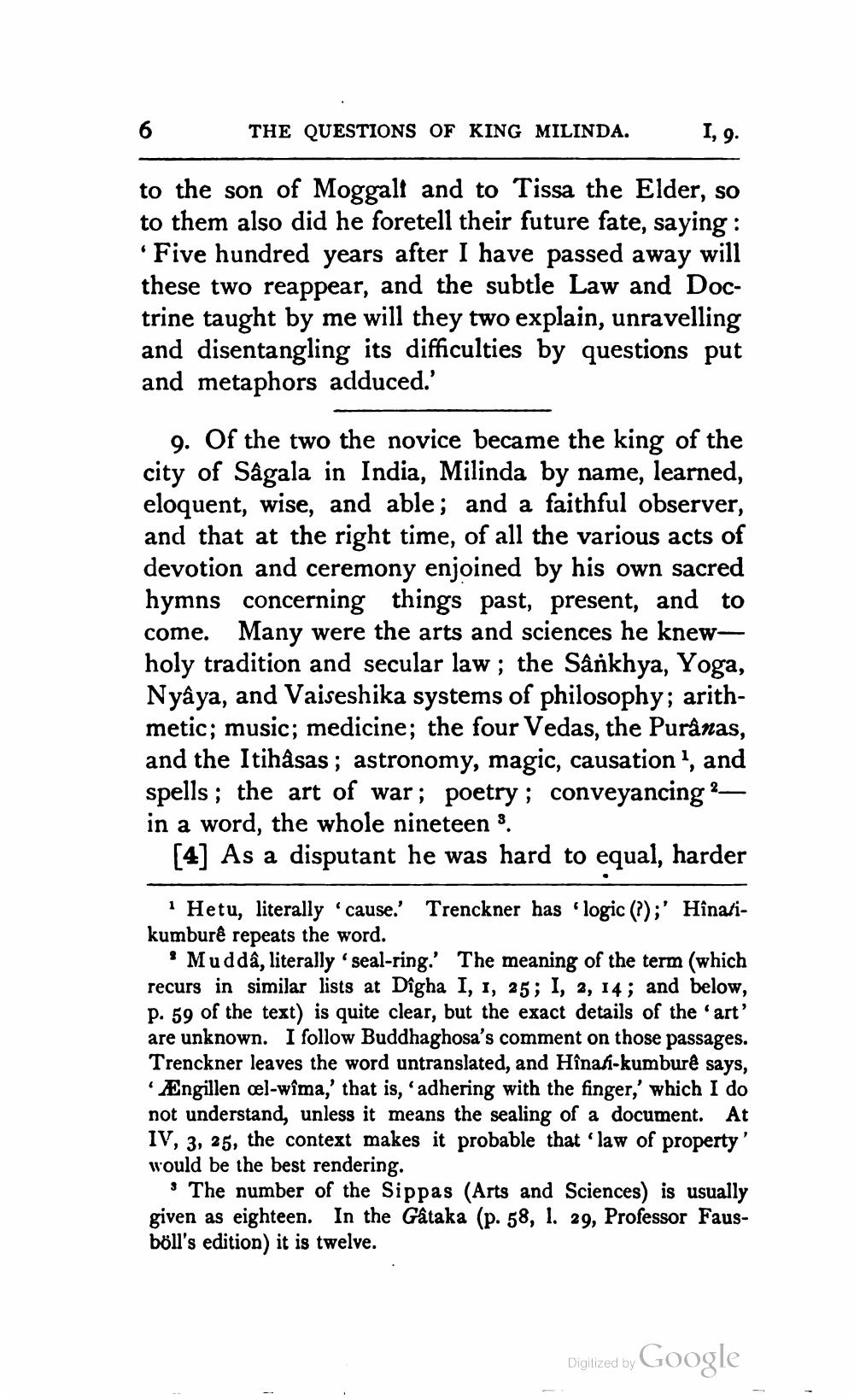________________
THE QUESTIONS OF KING MILINDA.
1, 9.
to the son of Moggalt and to Tissa the Elder, so to them also did he foretell their future fate, saying : • Five hundred years after I have passed away will these two reappear, and the subtle Law and Doctrine taught by me will they two explain, unravelling and disentangling its difficulties by questions put and metaphors adduced.'
9. Of the two the novice became the king of the city of Sagala in India, Milinda by name, learned, eloquent, wise, and able; and a faithful observer, and that at the right time, of all the various acts of devotion and ceremony enjoined by his own sacred hymns concerning things past, present, and to come. Many were the arts and sciences he knewholy tradition and secular law; the Sânkhya, Yoga, Nyâya, and Vaiseshika systems of philosophy; arithmetic; music; medicine; the four Vedas, the Puranas, and the Itihasas; astronomy, magic, causation', and spells; the art of war; poetry; conveyancing ? in a word, the whole nineteen 8.
[4] As a disputant he was hard to equal, harder
1 Hetu, literally 'cause.' Trenckner has "logic (?);' Hinatikumburê repeats the word.
Muddā, literally seal-ring.' The meaning of the term (which recurs in similar lists at Digha I, 1, 25; I, 2, 14; and below, P. 59 of the text) is quite clear, but the exact details of the 'art' are unknown. I follow Buddhaghosa's comment on those passages. Trenckner leaves the word untranslated, and Hînali-kumburê says,
Ængillen cel-wîma,' that is, 'adhering with the finger,' which I do not understand, unless it means the sealing of a document. At IV. 3. 25. the context makes it probable that 'law of property' would be the best rendering.
The number of the Sippas (Arts and Sciences) is usually given as eighteen. In the Gataka (p. 58, I. 29, Professor Fausböll's edition) it is twelve.
Digitized by Google




